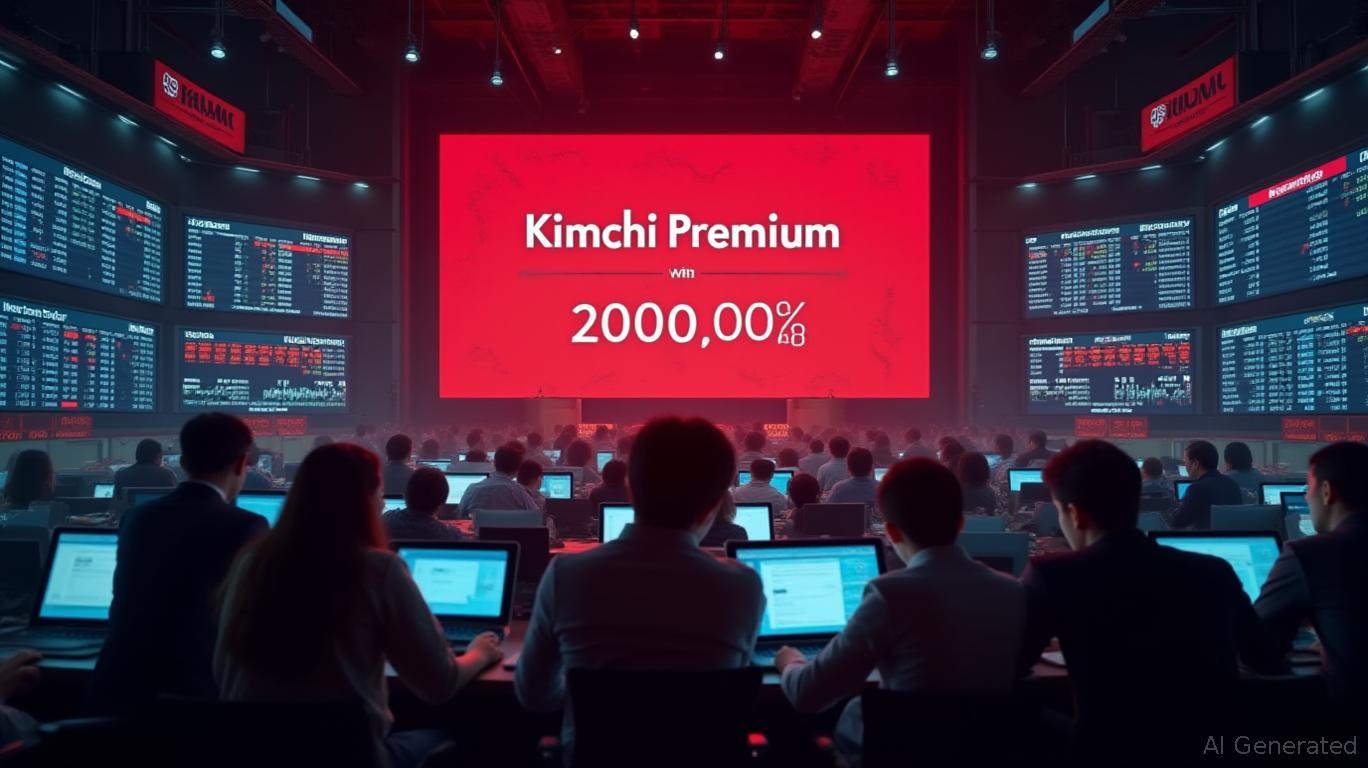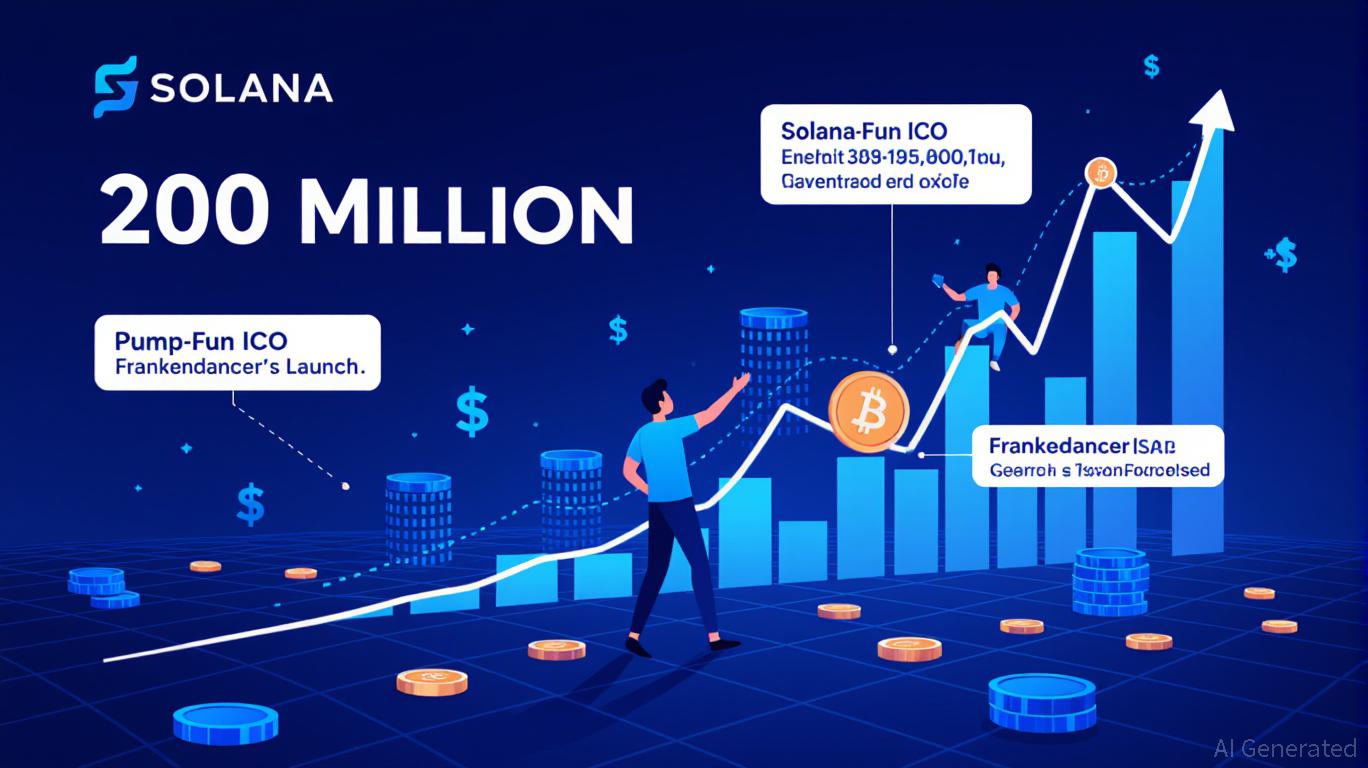Regulatory Challenges Cause Fluctuations in Kimchi Premium for 2025
- South Korea's Kimchi Premium for Bitcoin swung between -3% and +5% in 2025, driven by regulatory shifts and institutional behavior. - Stricter compliance rules and capital controls forced South Korean institutions to reduce crypto holdings, creating temporary oversupply and negative premiums. - Retail investors showed cautious behavior with 22% lower KRW deposits, while won depreciation and travel rules worsened liquidity constraints. - Arbitrage became unprofitable due to 3-4% hidden costs, pushing trad

The Kimchi Premium, a persistent gap in pricing between
The Kimchi Premium originally arose from South Korea’s strict capital controls, which limit the movement of large amounts of Korean won (KRW) abroad. These measures, established after the 1997 financial crisis, restrict arbitrage and foster local price premiums. Yet, during 2024–2025, the premium turned negative for extended periods, reflecting a change in institutional strategies. Local funds and corporations scaled back crypto investments in response to tighter regulations, such as the
Retail investor sentiment also had an impact. Blockchain data showed a 22% drop in KRW deposits to Korean exchanges in July 2025, indicating more cautious trading by individuals amid economic uncertainty and regulatory fatigue Bitcoin Is $2,500 Cheaper in South Korea—What the … [ 2 ]. Additionally, the Korean won’s depreciation against the U.S. dollar in 2024 made Bitcoin more expensive for local buyers, further reducing demand. These factors, along with the introduction of a “travel rule” that requires ID checks for crypto transfers above 1 million won, tightened liquidity even more How to Understand the Kimchi Premium and Its Weird Flip in … [ 1 ].
Traditional arbitrage, once used to profit from the Kimchi Premium, became less attractive as hidden costs mounted. Traders faced combined expenses of 3–4% from trading, transfers, compliance, and currency conversion, making arbitrage worthwhile only when the premium surpassed 5–6% How to Understand the Kimchi Premium and Its Weird Flip in … [ 1 ]. During periods of negative premium, savvy traders shifted away from direct arbitrage, instead engaging in premium momentum strategies—buying when the discount was under 2% and selling when it exceeded 8%. Some companies also used both domestic and offshore entities to work around capital restrictions How to Understand the Kimchi Premium and Its Weird Flip in … [ 1 ].
With the Kimchi Premium fluctuating between -3% and +5% in 2025, it signals an ongoing adjustment in South Korea’s crypto landscape. Positive premiums point to robust local demand and speculative activity, while negative premiums suggest risk aversion among institutions or regulatory concerns. Experts note that the increasing occurrence of negative premiums points to deeper structural changes, such as the introduction of crypto taxes in 2025 and possible relaxation of travel rules for smaller transfers How to Understand the Kimchi Premium and Its Weird Flip in … [ 1 ]. These trends could further align South Korean prices with global markets, reducing the Kimchi Premium’s historical volatility.
For large investors and institutions, the Kimchi Premium acts as a real-time indicator of market mood. A positive premium often reflects capital flowing into Korean exchanges, driven by retail enthusiasm or a search for safety during geopolitical tensions. On the other hand, a negative premium signals capital leaving the local market, especially as institutions reduce exposure. The recent swings in the premium highlight the ongoing push and pull between South Korea’s regulatory environment and the international nature of Bitcoin trading, affecting both liquidity and price formation.
Disclaimer: The content of this article solely reflects the author's opinion and does not represent the platform in any capacity. This article is not intended to serve as a reference for making investment decisions.
You may also like
ZKP's Build-First Movement: $100M Infrastructure Set, Speculation Not Permitted
- ZKP’s $100M pre-launch infrastructure includes $17M in Proof Pods hardware, enabling immediate global deployment post-presale. - The project’s real-time tracking dashboard links rewards to device performance and market prices, ensuring transparent, self-stabilizing economics. - Daily on-chain auctions distribute 200M tokens proportionally, eliminating gas wars and creating mathematically verifiable fairness for all participants. - Institutional interest grows as ZKP’s encrypted AI architecture attracts e
Solana's Latest Price Swings and Network Stability: Should Investors See a Chance to Buy or a Reason for Caution?
- Solana (SOL) demonstrates 2025 network resilience with 16-month uptime, 200M+ daily transactions, and 1M+ TPS via Frankendancer upgrades. - Price volatility sees 48% pullback from $293 high to $153, driven by regulatory risks, macroeconomic shifts, and external shocks like Sharps Technology's treasury losses. - Institutional adoption (e.g., VanEck's $1B ETF) and 50% staking growth signal long-term potential, though daily 6% price swings highlight market sentiment risks. - Network stability remains intact

Ethereum News Update: Ethereum Reaches Pivotal Moment as Large Holders Accumulate Amid Weakening Technical Indicators
- Ethereum (ETH) near $3,100 tests critical support as bearish technical indicators clash with aggressive whale accumulation of $53.91 million in a week. - Key metrics show price below 200-day EMA and RSI near oversold levels, while whale positions grew by 180K ETH amid $107M ETF outflows. - Institutional buyers like Tom Lee's BitMine add $29.14 million to holdings despite $120M unrealized losses, contrasting BTC's $523M ETF inflows. - Macroeconomic risks persist with Fed hawkishness and declining network
Fed Faces Delicate Balancing Act: Weighing Inflation Concerns Against Labor Market Challenges in December Decision
- The Fed faces a December meeting split over rate cuts, with dissenters like Lorie Logan opposing action due to high inflation and Christopher Waller advocating easing to address labor market weakness. - Logan argues current policy balances inflation control with gradual labor market adjustments, warning against premature cuts without clear progress toward 2% inflation. - Waller supports a 25-basis-point cut, citing deteriorating hiring trends, while facing resistance from officials demanding stricter cri